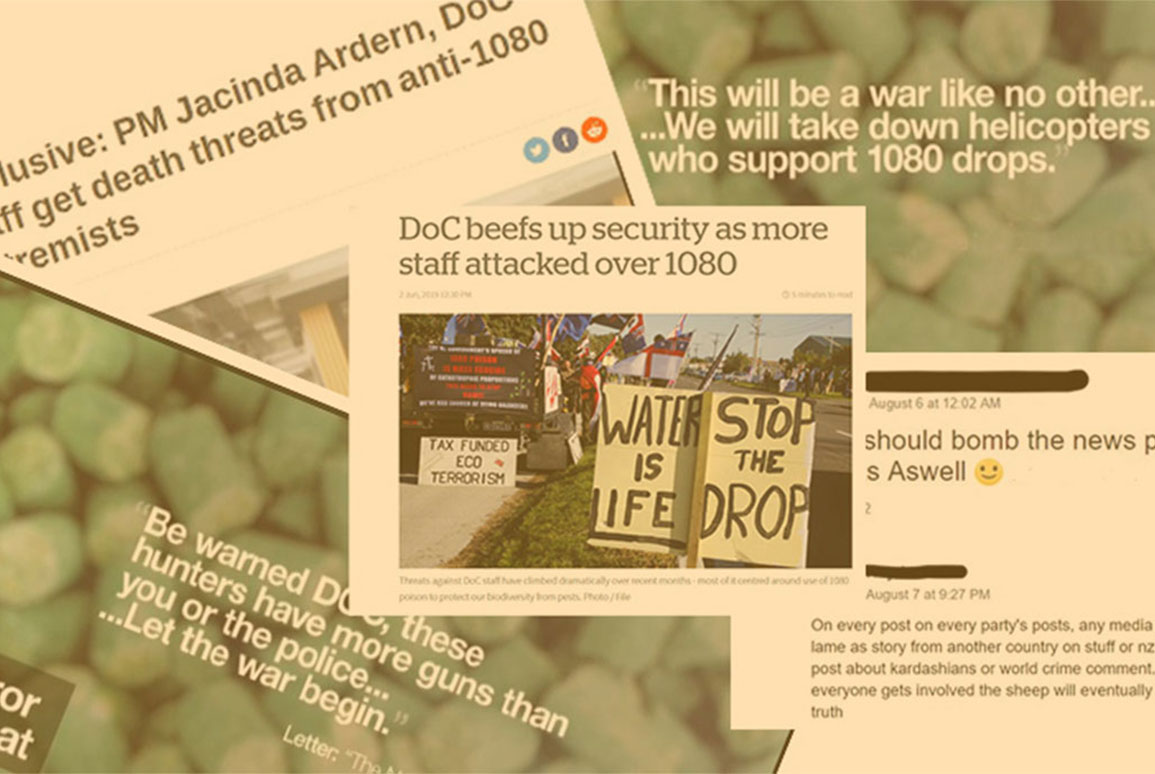My experience: The Influence of Social Media on Biosecurity
4 February 2021
Sian Reynolds has seen first-hand the impact that on-line exchanges can have on perception and behaviour in the real world; and shares the positive and negative aspects.

Social media is truly a force to be reckoned with. It has empowered the rapid sharing of information (whether it be true or false), and can greatly influence the way we see the world. Social media can influence thoughts, behaviours and trends in a matter of hours. The speed at which information can spread has been likened to a virus spreading through a community; and ‘viral communication’ may have a positive or negative impact on how an idea is perceived.
New Zealand’s biosecurity industry has not escaped this, as social media has transformed the way consultants undertake their day-to-day work.
New Zealand boasts some of the most unique and biodiverse ecosystems in the world. You only have to jump in your car and travel an hour in any direction, and you’ll find yourself in a completely different ecosystem from where you started. But species introduced by Europeans in the late 1800s – pines, possums, rats, mustelids, feral pigs, and scotch broom to name just a few – all pose significant threats. The drive to protect New Zealand’s ecosystems is what spurred me into a career in biosecurity; but I had no idea the impact that social media would have on this industry and on my career.
In 2010, at the beginning of my career, the public knew very little about the ways introduced pests are controlled in New Zealand. Biosecurity information was confined to conferences or scholarly journal articles; and even with the development of the internet you had to search high and low to find an article relevant to the discipline. Ten years ago, few people knew what a stoat trap looked like. Now, you’re lucky if you can find an urban garden without one residing amongst its bushes.
The target of ‘Predator Free 2050’ is a great example of how a biosecurity goal can be disseminated virally and gain traction. Even if we never achieve a fully predator-free country, awareness of the issue is now second nature. The number of community groups, towns, cities, and schools with the aim or title of ‘predator free’ is phenomenal. Before the predator free movement, one could argue that many New Zealanders were unaware of the issues facing our endemic flora and fauna, and ‘rat’ and ‘stoat’ were not common household words.
However, false or unverified information is circulated just as easily, and this misinformation is threatening our social license to control pests. The biosecurity industry’s social licence to use certain control methods underpins conservation efforts throughout the country. Without these control methods, species such as scarlet mistletoe, whio, and rowi or orange-fronted kakariki would be extinct. There are many people who are against the use of toxins, traps, chemicals and other methods . Social media has enabled the unification of individuals with alternative ideas, into groups of people who actively rally against the use of specific biosecurity control methods.
It would be fine if the computer screen is where it stopped; however, this is not the case. In 2019, the Department of Conservation (DOC) reported 23 cases of abuse or injury of staff to the New Zealand Police. In a wave of anti-1080 hostility, DOC staff were threatened, vehicles (both work and private) were vandalised, and staff were assaulted.
It didn’t stop there. Contractors undertaking operations were also targeted – sabotage of helicopter fuel, threats to shoot down helicopters from the sky, protestors trying to gain access to load sites – compared with previous years, threats had escalated.
Witnessing this first-hand, it soon became apparent that the dissemination of false information through social media channels, and the congregation of like-minded individuals, meant that threats and abuse moved beyond the digital realm and into real life.
Feeling on edge while trying to do your job is not something we should be subjected to. Social media and the ease with which it can spread misinformation, has a lot to answer for when it comes to biosecurity operations now conducted in New Zealand.
As an industry, we all need to be smarter with how we use social media to get our messaging across. Combating misinformation will be key moving into the future. It is a powerful tool and we have had some great wins through its use. The ‘Check, Clean, Dry’ campaign has been very successful at informing the public and changing behaviours. Targeted social media advertising was pivotal in creating this change with often sub-conscious advertising targeting users of boat ramps and raising awareness of didymo and lagarosiphon; or National Parks alerting visitors to the threats of kauri dieback and myrtle rust.
But social media is a double-edged sword. Whether we like it or not, it is here to stay. Maintaining our social licence will be imperative to protecting our indigenous flora and fauna. New tools, ideas, and methods are currently being researched and developed for New Zealand’s biosecurity industry; and some of these may be controversial in the public arena.
We need to think hard about the way we portray what we do, how we do it, and the successes we accomplish. How can you ensure we keep that social licence so that we can continue to protect our beautiful country?
Think twice before you share an article or picture on Facebook. Is it the truth? What message does it send? What behaviour might it encourage?
Find out more
New transformational tools for the Predator Free 2050 effort
For further information please contact Sian Reynolds or Marcus Girvan

